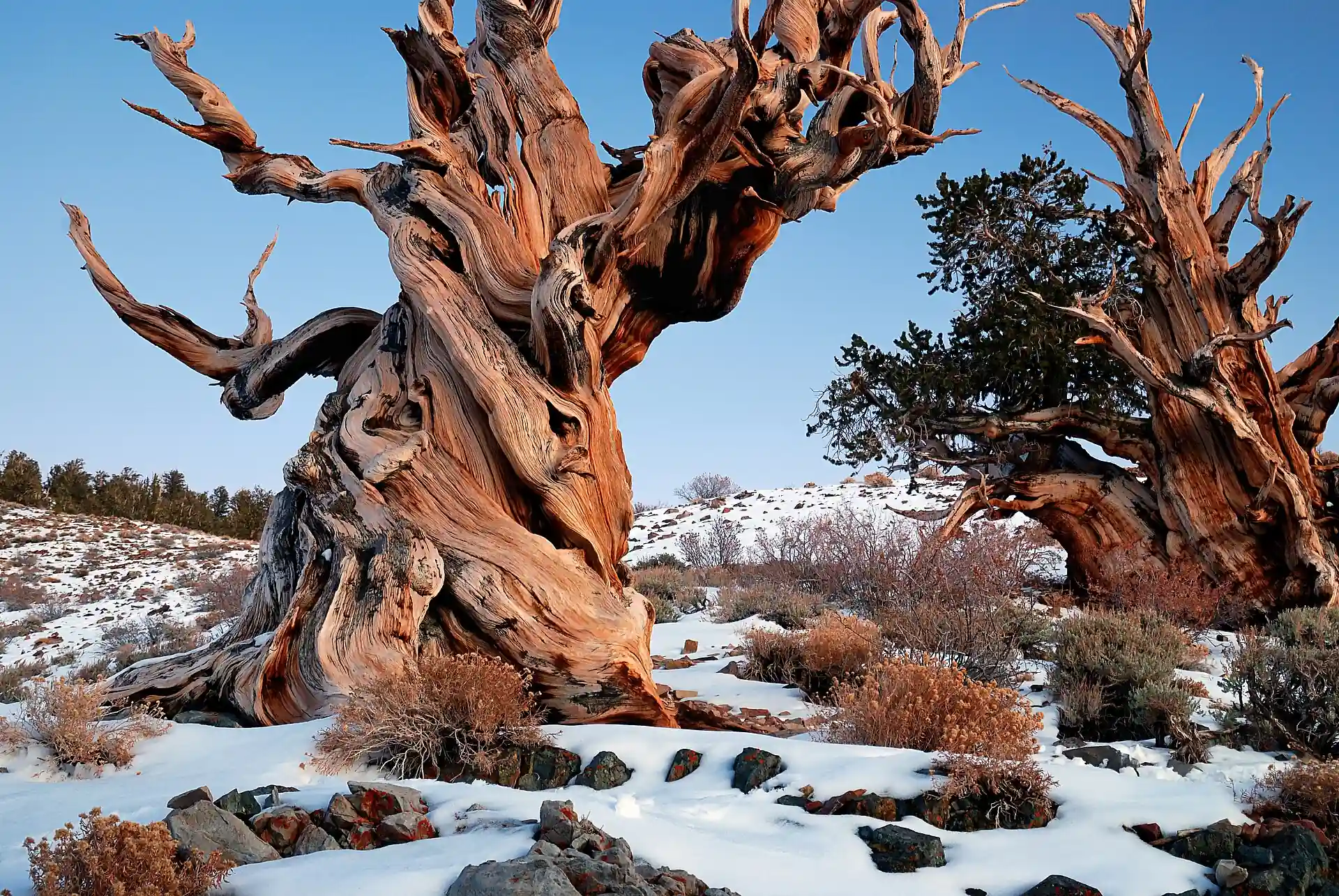
The Incredible 4,850-Year-Old Methuselah Tree: The Oldest Living Tree on Earth
When people hear the phrase “the oldest living organism on Earth,” most imagine a massive tortoise shell or an ancient coral reef. But one of the longest-living beings on our planet doesn’t stand on legs, it stands on roots. The Methuselah tree is one of the oldest living organisms on Earth. This ancient pine in California has been alive for nearly five thousand years.
Table of Contents
There are trees on Earth that have been growing since long before humans invented writing. Some have outlasted pharaohs, empires, and even modern wars. Among them are two true record holders: America’s Methuselah tree and Sweden’s Old Tjikko. Both are older than the pyramids and remind us that nature is far more patient than we are.
In the White Mountains of eastern California stands an unassuming Great Basin bristlecone pine (Pinus longaeva) known as Methuselah. It was named after the biblical figure said to have lived 969 years. Scientists estimate that Methuselah sprouted around 2830 BCE, meaning it began growing before the Great Pyramid of Giza was built. This tree is over 4,850 years old, making it one of the oldest living organisms on Earth.
Methuselah Tree – The Oldest Living Organism in America That Survived Civilizations
The secret to Methuselah’s longevity lies in the extreme environment where it grows. Bristlecone pines thrive at elevations above 9,800 feet, where few other plants can survive. Temperatures are freezing, the air is thin, and the soil is nearly barren. Ironically, those harsh conditions are what protected it: cold, drought, and rocky ground keep away almost everything that could harm it.

Each year, the tree grows only a few millimeters. Its wood is so dense and resin-rich that it resists rot, insects, and decay. Some parts of the tree are long dead, while others remain alive, constantly regenerating a natural balance that allows it to endure for thousands of years.
Methuselah isn’t just one of the oldest trees, but also one of the toughest. Some of its relatives have even survived wildfires, continuing to grow from charred trunks. Thanks to its incredibly dense wood, scientists can study the tree rings to uncover climate records that go back nearly five thousand years.
The exact location of Methuselah is kept secret to protect it from vandals and souvenir hunters. All that’s known is that it grows within the Inyo National Forest, not far from the Ancient Bristlecone Pine Forest Trail. Visitors who hike through this area can see many other ancient bristlecone pines, some more than 4,000 years old.
Methuselah has quietly watched the world change thousands of times, from the building of the pyramids to the rise of artificial intelligence. It reminds us that true wisdom lies in patience and stillness, not in speed.

Although Methuselah has survived millennia of storms, drought, and ice, it isn’t immortal. Its greatest threat today is, ironically, humanity itself. Climate change is slowly raising temperatures in the White Mountains, pushing the natural range of these trees higher and higher. If the conditions shift too drastically in the coming decades, even this ancient giant may not endure what it has survived for thousands of years.
To understand how ancient Methuselah really is, here’s what already happened after it began growing:
- It was already 1,000 years old when the Great Pyramid of Giza was built.
- It sprouted more than a thousand years before the invention of writing in Mesopotamia.
- It lived through the rise and fall of the Roman Empire.
- It was nearly 4,000 years old when the Aztec civilization was founded.
- And it’s still alive today – standing quietly while humanity invents AI and space travel.
Methuselah is more than a tourist curiosity. It is a living symbol of what we stand to lose if the planet changes faster than nature can adapt. If you enjoyed reading about the world’s oldest tree, you might also like our article on animals that can survive in extreme conditions.
Sources:






